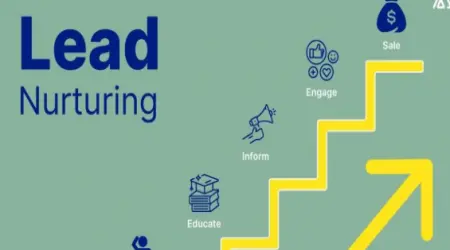

How to Use A/B Testing in Email Campaigns
How to Use A/B Testing in Email Campaigns
What if a simple tweak to your subject line could increase open rates by 25%?
Or a different CTA button color boosted clicks by 40%?
That’s the power of A/B testing.
A/B testing—also known as split testing—is the practice of sending two (or more) versions of an email to see which one performs better. It takes the guesswork out of email marketing and replaces it with data-driven decisions.
In this article, we’ll walk you through how A/B testing works and how to use it to improve your email campaign results.
1. What Is A/B Testing in Email Marketing?
A/B testing involves creating two versions of a single email, where one element is different (e.g., subject line, image, CTA), and sending them to a small portion of your list.
After tracking performance, the better-performing version is sent to the rest of your audience.
You can test:
Subject lines
Preheaders
From name
Body content
Images or layout
CTA placement or text
Send time or day
2. Why A/B Testing Matters
Every audience is different. What works for one brand may flop for another.
Testing helps you:
Understand subscriber preferences
Improve engagement metrics
Increase conversions
Make informed marketing decisions
Continuously optimize over time
Without testing, you’re guessing. With testing, you’re learning.
3. Elements You Can Test
a. Subject Line
Often the first thing to test. Try:
Curiosity vs. direct benefit
Short vs. long
Emoji vs. no emoji
Personalization vs. generic
b. Preheader Text
This shows up in the inbox preview. It should complement or enhance the subject line.
c. From Name
Test your brand name, a real person’s name, or a combo (“John from Growthify”).
d. Email Body Copy
Try:
Long-form vs. short-form content
Storytelling vs. bullet points
Formal tone vs. conversational tone
e. Images or Layout
Compare:
Image-heavy vs. text-focused emails
One-column vs. multi-column layout
Different header styles
f. Call to Action (CTA)
Test:
Button vs. text link
CTA wording (“Get the guide” vs. “Download now”)
CTA placement (top, middle, bottom)
g. Send Time and Day
Test different days and hours to identify when your audience is most responsive.
4. How to Run an A/B Test
Step 1: Choose One Variable to Test
Avoid testing multiple elements at once—otherwise, you won’t know what caused the difference.
Step 2: Create Two Versions
Keep everything the same except for the one variable you're testing.
Step 3: Determine Your Sample Size
Most email platforms allow you to test on 10–30% of your list, then send the winner to the rest.
Larger audiences yield more reliable test results.
Step 4: Define Success Metrics
What are you optimizing for?
Open rates (subject line tests)
Click-through rates (CTA tests)
Conversion rates (full email content)
Step 5: Run the Test and Wait for Results
Allow enough time—at least a few hours, ideally 24—to collect accurate data.
Step 6: Analyze the Results
Determine statistical significance and decide whether the change is worth implementing permanently.
5. Best Practices for A/B Testing
✅ Test regularly. One test is helpful. A consistent testing strategy is powerful.
✅ Use a hypothesis. Don’t test randomly. Have a reason.
✅ Keep a testing log. Document what you tested, why, and what the results were.
✅ Focus on impact. Test things that actually move the needle.
✅ Let the data guide you. Don’t assume—observe.
6. Common A/B Testing Mistakes to Avoid
❌ Testing too many variables at once
❌ Ending the test too early
❌ Choosing the wrong metric to evaluate
❌ Not testing frequently enough
❌ Drawing conclusions from small sample sizes
Remember: Not every test will win, but every test teaches you something.
Final Thoughts: Test, Learn, Improve
A/B testing transforms your email marketing from guesswork into strategy.
By continuously testing and optimizing, you learn what resonates with your audience—and you turn small insights into big results.
Start small, stay curious, and let the numbers guide your next move.




